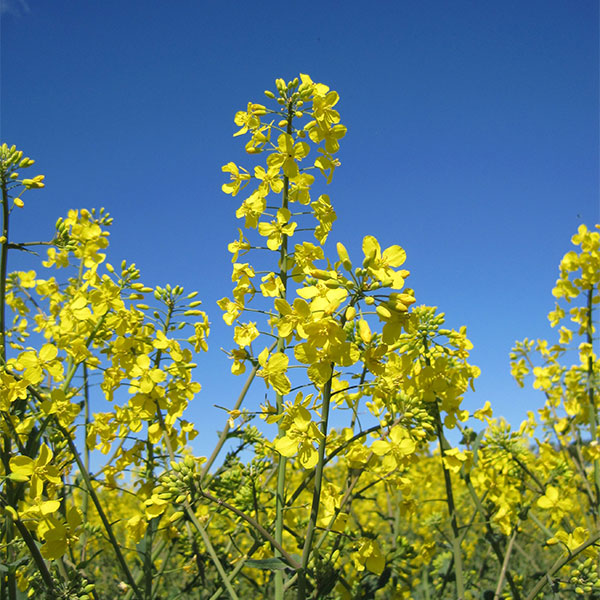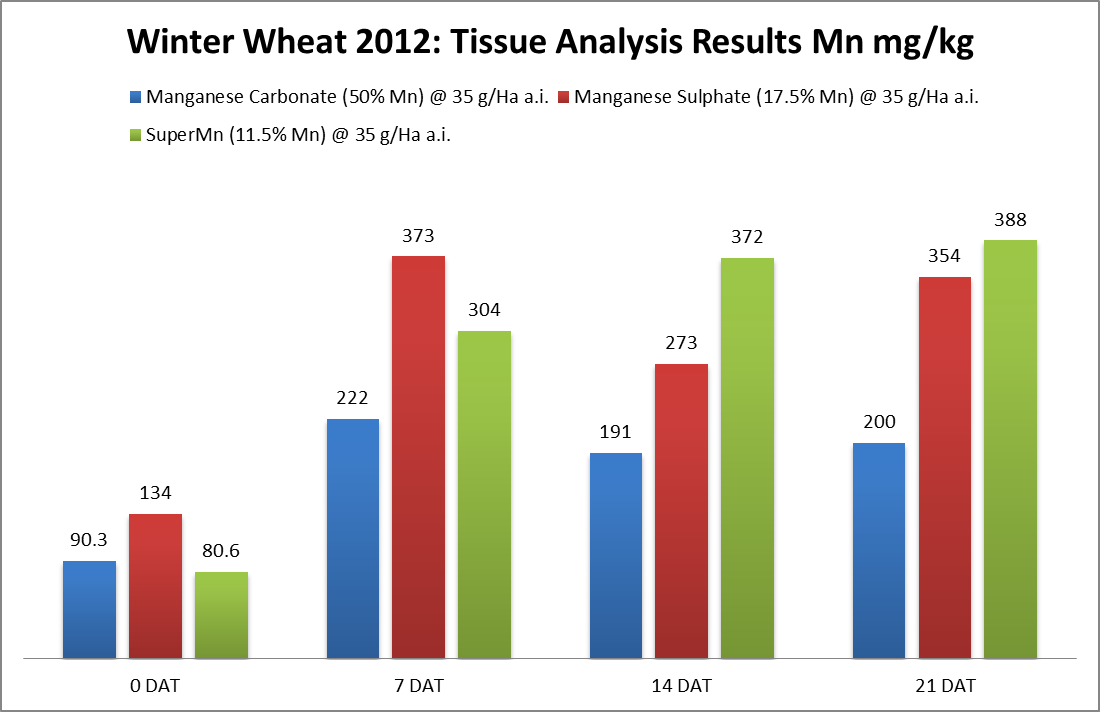
Manganese deficiency is the most commonly seen nutrient availability issue, seen especially at this time of year. It can be seen in winter crops entering the rapid growth stages and also in emerging spring crops. The most susceptible crops include wheat, barley, oats, sugar beet, peas and potatoes. Soils with either high pH or high organic matter are at the highest risk. Heavy liming, poor drainage, unconsolidated seedbeds, heavy phosphate applications, low potash content and adverse weather conditions can all aggravate manganese deficiency. Manganese availability has a major influence on photosynthesis, and the symptoms in cereals tend to be irregular patches of pale crops with floppy growth and interveinal streaks of white in wheat, grey in oats and brown spotting in barley. Legumes tend to show interveinal yellowing leading to necrotic patches.
Why OMEX SuperMn?
OMEX SuperMn is a unique formulation of Manganese with Magnesium, Nitrogen and Sulphur. This combination contains rapidly-acting nitrate and slower release sulphate sources to give both short and long term release (demonstrated in the cereal comparison below).
Choosing a product that has the ability to give both rapid uptake and long-lasting action helps to reduce costs versus cheaper quick acting products that require several repeat applications. Ensuring that a crops manganese demand is continually met reduces the likelihood of plant stress and likely yield loss.

|
Crop |
Timing |
Rate |
Comments |
| Cereals | AutumnSpringSpring |
1.5 l/ha 1.5 l/ha 3.0 l/ha |
Maintenance application: apply as soon as there is sufficient foliage to absorb the sprayMaintenance application: apply when spring growth starts, up to GS31Deficiency application: apply when spring growth starts up to GS31 |
| Oilseed Rape | AutumnSpringSpring |
1.5 l/ha 1.5 l/ha 3.0 l/ha |
Apply prior to dormancyMaintenance application: at onset of rapid growthDeficiency application: at onset of rapid growth |
| Potatoes | When crop meets in the rows |
3.0 l/ha |
If deficiency symptoms persist, repeat 7-10 days after flowering at 1.5 l/ha.Continue applications if deficiency persists |
| Sugar beet | 4-6 leaf stage |
2.0 l/ha 3.0 l/ha |
MaintenanceDeficiency |
| Peas and Beans | 10-15 cm high |
3.0 l/ha |
If deficiency symptoms persist, repeat 7-10 days after flowering at 1.5 l/ha |
| Vegetables | 4-6 leaf stage |
1.5 l/ha 3.0 l/ha |
MaintenanceDeficiency |
How to achieve Best Use
Application is best during high humidity (early morning, late afternoon), and spraying in cooler periods during hot weather can also increase plant uptake.
Omex trials have shown that the addition of efficient adjuvants to the spray solution, such as Omex NA13, significantly improves leaf coverage and uptake. This may not be necessary in multi-way tank mixes with crop protection chemicals, but we recommend that an adjuvant should always be used when Manganese treatments are applied alone.
Add Omex NA13 at 0.1% of the spray solution (e.g. 200 ml in 200 litres of water) to improve uptake.
In Summary
If Manganese deficiency has been identified correct product choice and application is essential for optimal treatment to combat this deficiency. If you are in doubt about the exact causes of deficiency symptoms, Omex SAP testing can give a very rapid diagnosis for all the major and minor crop nutrients.
Full tank mixing guidelines for OMEX SuperMn are available on the Omex website.
OMEX SuperMn is an inorganic liquid formulation containing (w/v) Nitrogen 3.0%, Manganese 11.5%, Magnesium (MgO) 2.4% and Sulphur (SO3) 12.5%
